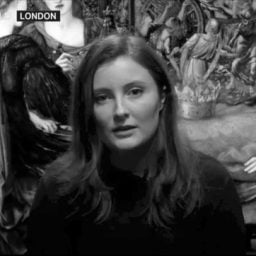On View
Louise Bourgeois Joins the Ranks of Classical Masters at Rome’s Galleria Borghese
The French-American sculptor's suggestive work explored many of the same themes as the Old Masters.
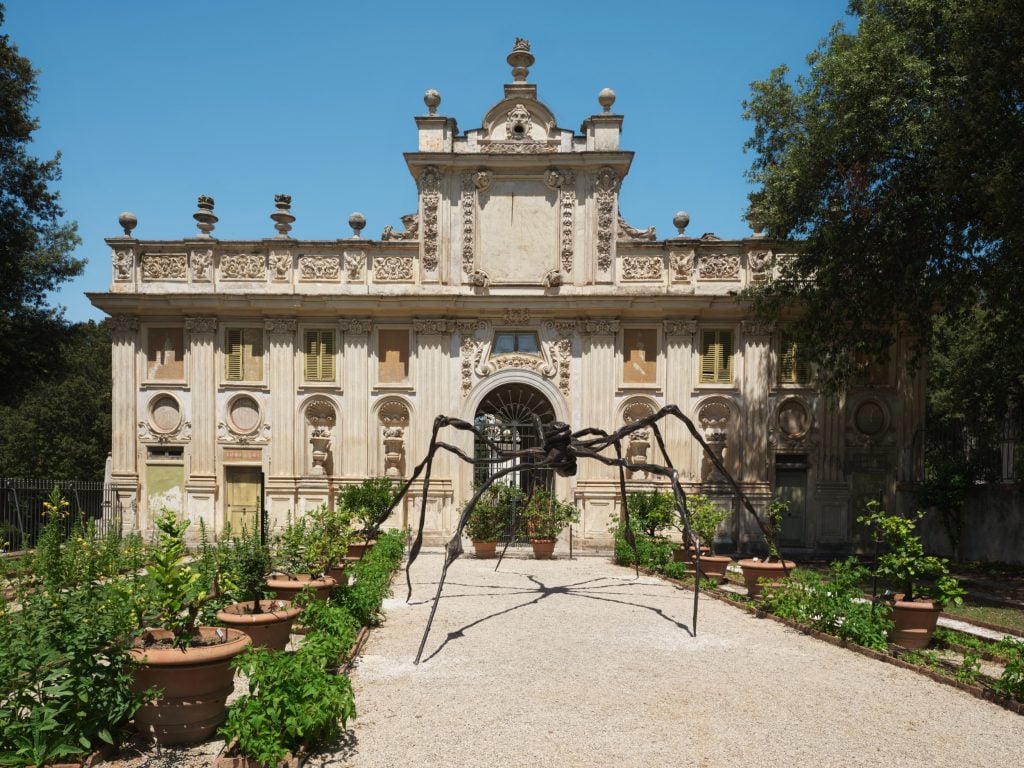
Like many of the greats of modern art, Louise Bourgeois’s practice is both very much of the 20th century and yet, somehow timeless. Much has been made of how Bourgeois, after emigrating to New York in 1938, played a crucial role in transforming the influence of European movements like Surrealism to usher in a new era of American midcentury art. However, from the moment visitors are greeted by one of her iconic spiders at the main entrance, it is the transcendent, enduring appeal of Bourgeois’s work that is emphasized by a new exhibition at the Galleria Borghese in Rome. Here, some of her most emblematic works have been staged alongside a trove of classical treasures by the likes of Bernini and Antonia Canova.
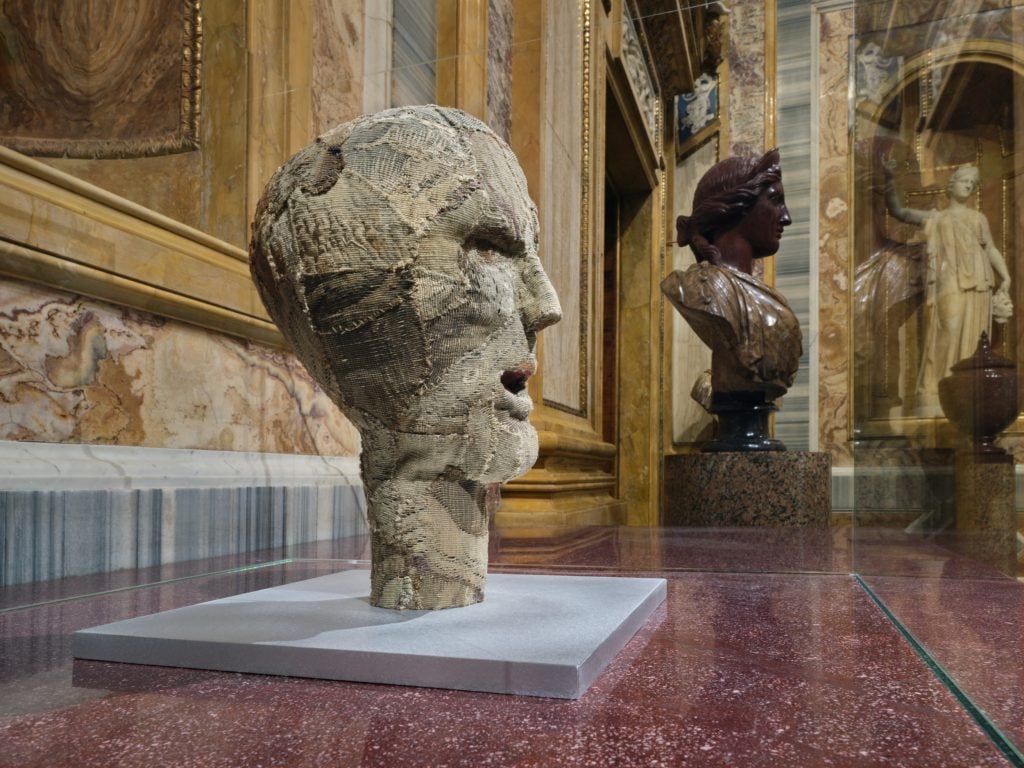
Louise Bourgeois, Untitled (2002) installed at the Villa Borghese in Rome, Italy. Photo: A.Osio, © The Easton Foundation/ Licensed by SIAE 2024 and VAGA at Artists Rights Society (ARS), NY.
An artistic preoccupation with the face and figure that has been explored through fresh eyes across the centuries is brought to the fore of “Louise Bourgeois: Unconscious Memories” (until September 15). The series of Untitled stuffed textile heads that Bourgeois began in 1998, at the age of 86, are interspersed among idealized portrait busts. The comparison underscores how the French-American artist used everyday materials like cotton cloths, towels, scraps of tapestry, and reused patterned garments, to animate her faces with charmingly idiosyncratic qualities.
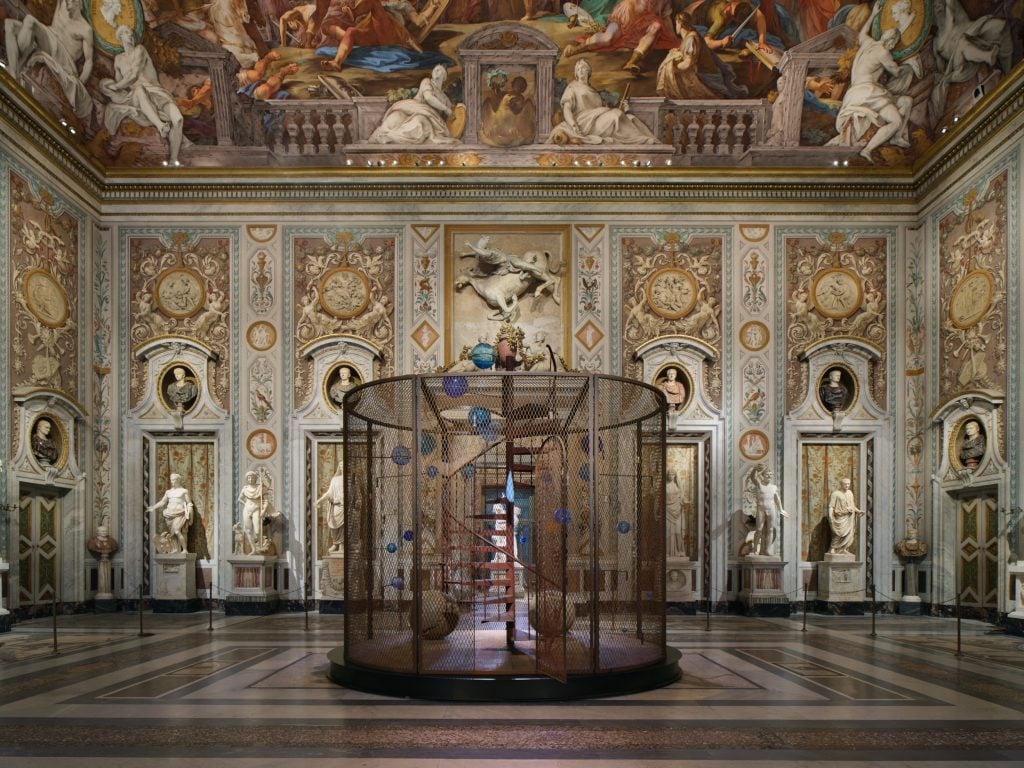
Louise Bourgeois, Cell (The Last Climb) (2008) installed at the Villa Borghese in Rome, Italy. Photo: A.Osio, © The Easton Foundation/ Licensed by SIAE 2024 and VAGA at Artists Rights Society (ARS), NY.
Amazingly, Bourgeois was still active in the years before she died in 2010, at the age of 98. One of these works was Cell (The Last Climb) (2008), the last of her series of Cell installations. These works contain various objects that had been found or salvaged by Bourgeois and often had a biographical resonance. In this case, she preserved the spiral staircase she had custom made in the 1980s for her Brooklyn studio. She used it daily until she had to move out of the building in 2005 as it was due to be demolished. The staircase is surrounded by blue glass baubles.
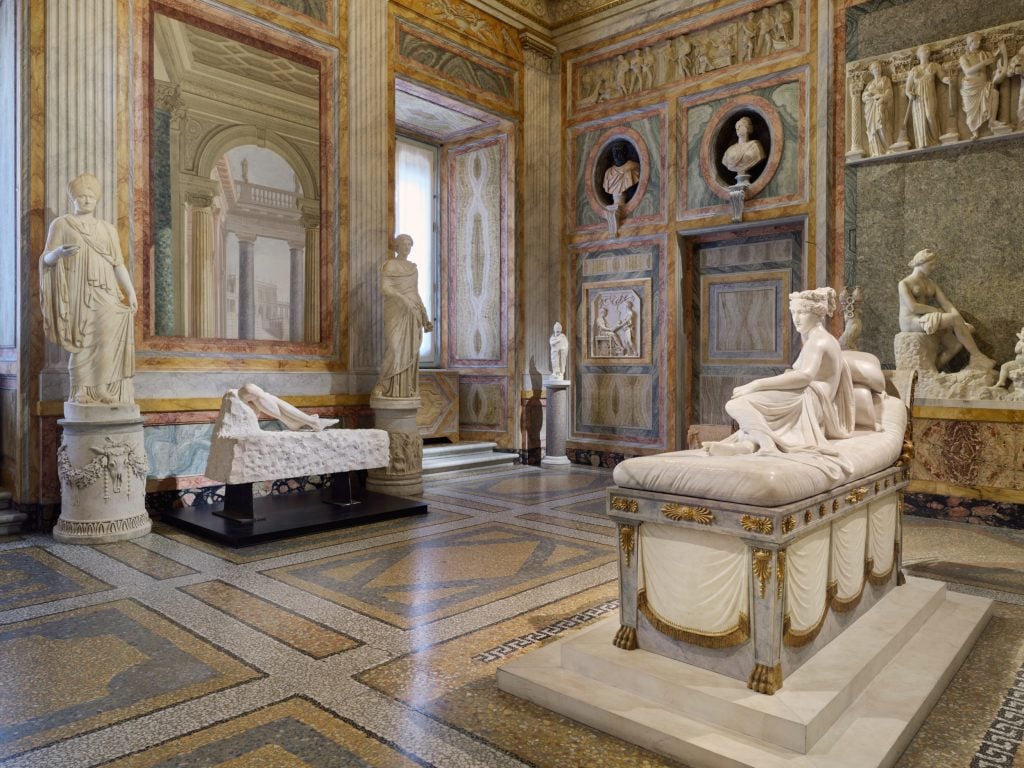
Louise Bourgeois, Jambes Enlacées (1990) installed at the Villa Borghese in Rome, Italy. Photo: A.Osio, © The Easton Foundation/ Licensed by SIAE 2024 and VAGA at Artists Rights Society (ARS), NY.
Though she has many more options available to her than the Old Masters, Bourgeois started working in marble in 1967 and would continue to do so. In the 1980s, she began focusing on specific body parts that were naturalistically articulated in contrast to the rough-hewn stone bases from which they emerged. James Enlacées (1990), a study of the legs of someone who appears to be lying back, has many formal resonances with Antonio Canova’s sculpture of Pauline Bonaparte reclining, installed opposite.
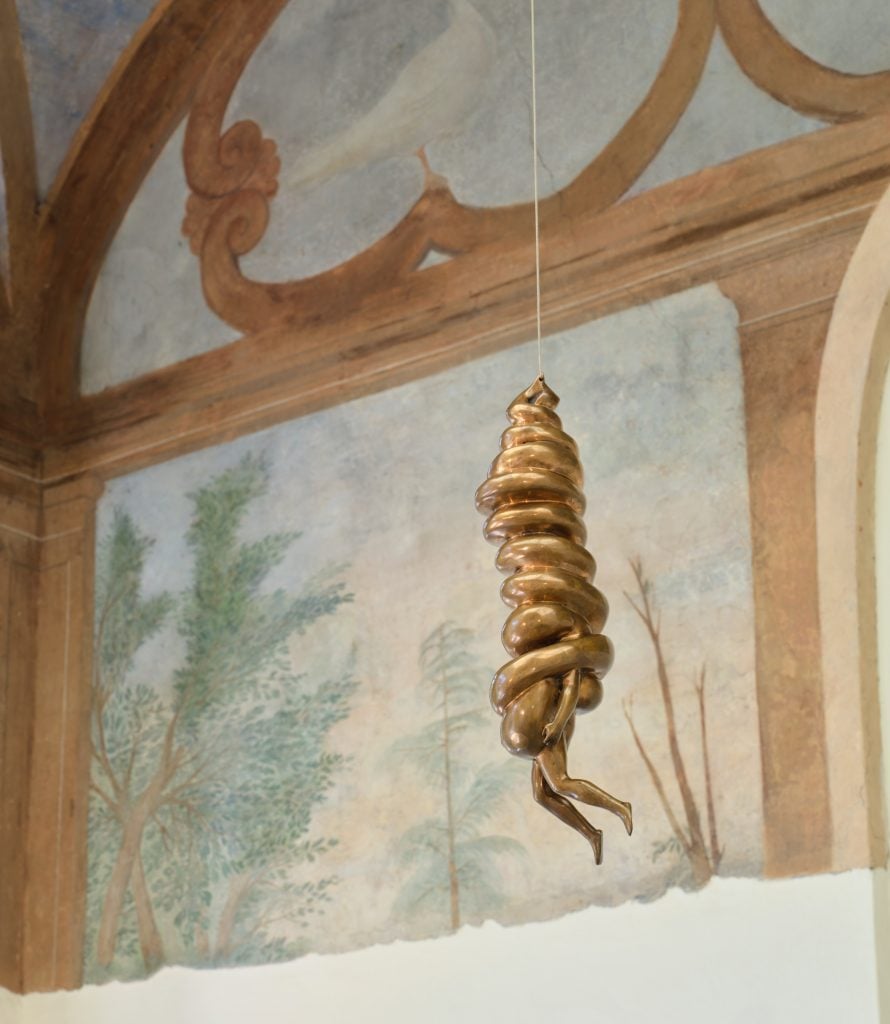
Louise Bourgeois, Spiral Woman (1984) installed at the Villa Borghese in Rome, Italy. Photo: A.Osio, © The Easton Foundation/ Licensed by SIAE 2024 and VAGA at Artists Rights Society (ARS), NY.
Suspended in front of an attractive fresco in which classical architectural elements open out onto the tops of trees, Spiral Woman was a motif that Bourgeois often returned to after the 1950s. Limbs emerge from a cocoon-like core that is made of swirling, semi-corporeal folds.
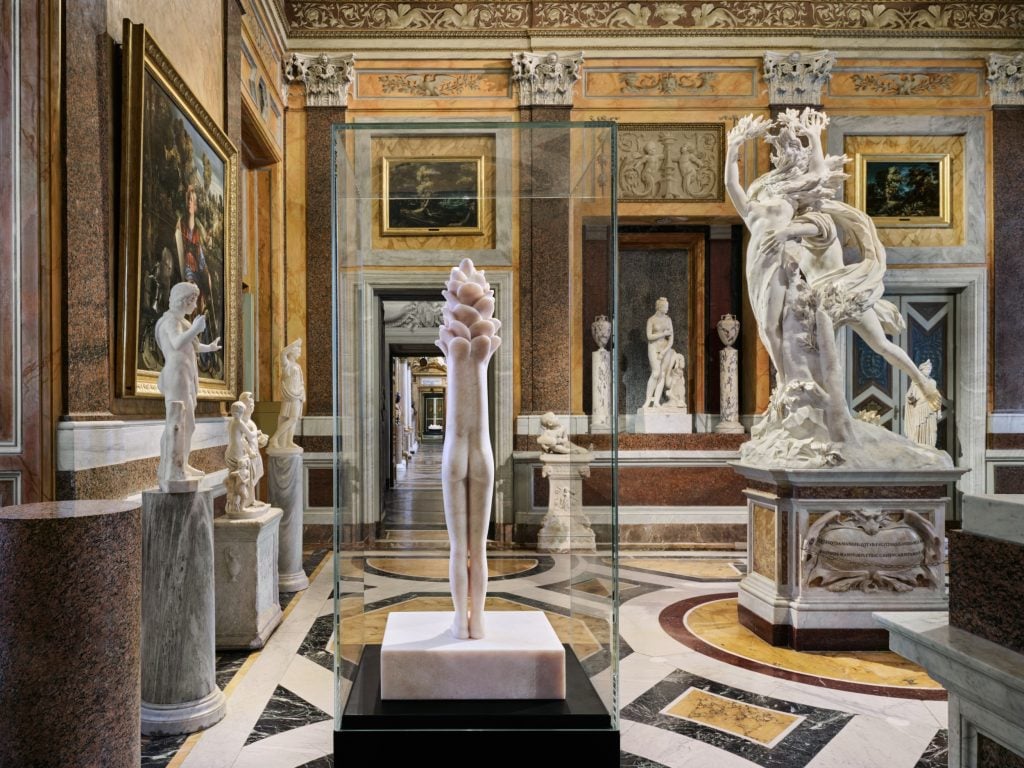
Louise Bourgeois, Topiary (2005) installed at the Villa Borghese in Rome, Italy. Photo: A.Osio, © The Easton Foundation/ Licensed by SIAE 2024 and VAGA at Artists Rights Society (ARS), NY.
The human form merging into something strangely herbaceous was surreal subject full of suggestive possibility that Bourgeois repeatedly liked to explore. As with many of her themes, it has an age-old appeal, and is here countered by Bernini’s famed Apollo and Daphne (c. 1622), which captures the moment in Ovid’s Metamorphoses when flesh of Daphne, miraculously lifelike in marble, starts turning into the bark and branches of a tree.
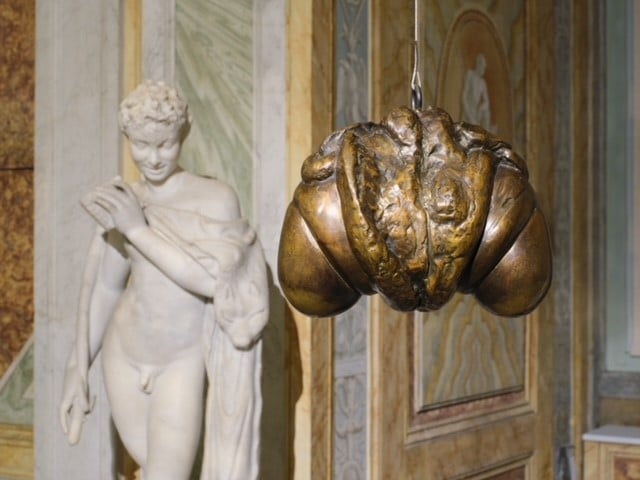
Louise Bourgeois, Janus Fleuri (1969) installed at the Villa Borghese in Rome, Italy. Photo: A.Osio, © The Easton Foundation/ Licensed by SIAE 2024 and VAGA at Artists Rights Society (ARS), NY.
One of Bourgeois’s most famous works, Janus is an ambiguous biomorphic form that exists in six versions, always suspended. Once again, the artist brings her work in communion with the past with the name Janus, which refers to the Roman god best known for being depicted with two heads facing in opposite directions. Fittingly, duality was a constant theme for Bourgeois.
“Louise Bourgeois: Unconscious Memories” at the Galleria Borghese in Rome, Italy is on view until September 15, 2024.

